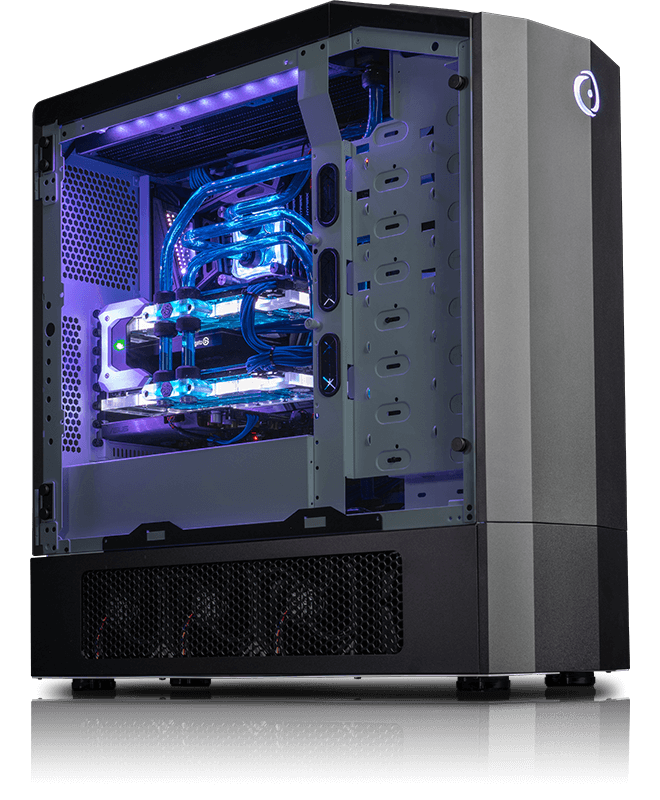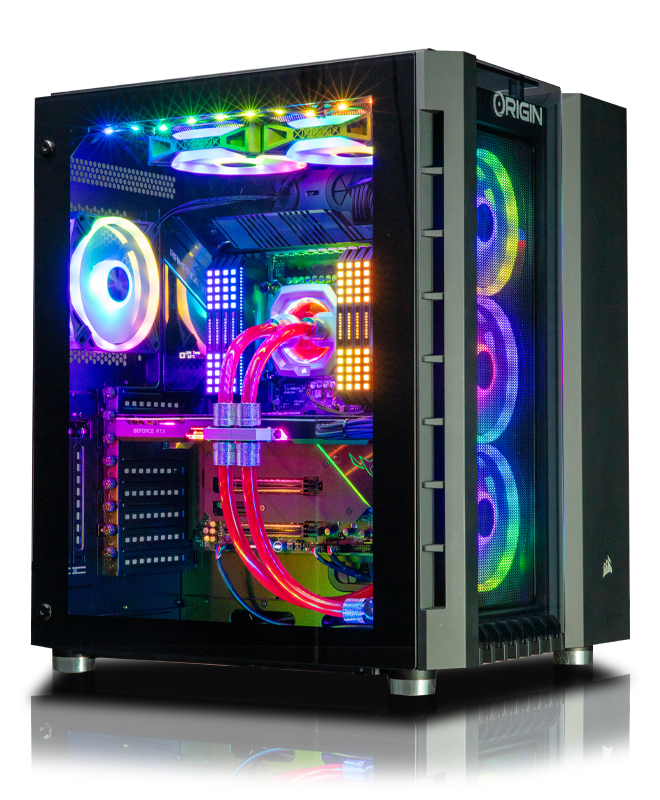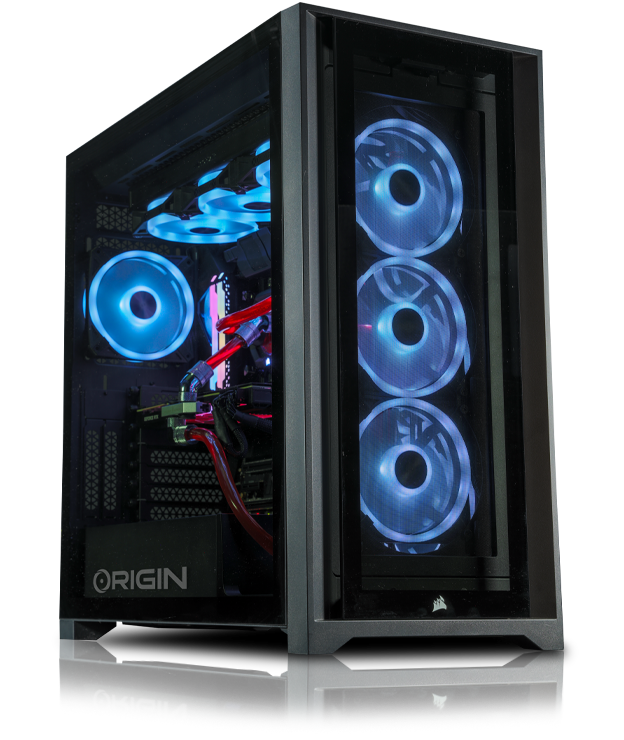ORIGIN PC GENESIS Gaming Desktop – Core i5 – 16GB Ram – GeForce GTX 1660 Ti – Super Tower
The first-ever full-tower gaming system to feature ORIGIN PC’s Variable Mounting, the GENESIS delivers unprecedented flexibility, including four motherboard mounting orientations, customizable remote controlled lighting, up to 34 total system hard drives, and GPU and CPU Cryogenic Liquid Cooling.
The ORIGIN PC GENESIS opens the door for an incredible PC gaming experience on the most customizable gaming desktop from ORIGIN PC. Extreme cooling or storage solutions give the GENESIS supercomputing capabilities compared to standard desktops.
PREMIUM CASE OPTIONS
Choose from ORIGIN PC’s premium super-tower GENESIS case or a CORSAIR Crystal Series 680X mid-tower case. The GENESIS case supports variable mounting for the motherboard, a bottom expansion for cooling or storage, an aluminum body with a server-grade steel frame, removable tempered glass or aluminum side panels, internal RGB lighting, and an ORIGIN ‘O’ logo lit by RGB lighting.
GEFORCE® RTX 30 SERIES THE ULTIMATE PLAY
GeForce RTX™ 30 Series GPUs in GENESIS desktops deliver the ultimate performance for gamers and creators. They’re powered by Ampere—NVIDIA’s 2nd gen RTX architecture—with new RT Cores, Tensor Cores, and streaming multiprocessors for the most realistic ray-traced graphics and cutting-edge AI features. Experience the greatest generational leap with a GENESIS desktop powered by GeForce RTX 30 Series.
The GENESIS gives you the option between four different motherboard mounting orientations to best fit your configuration and setup. Go from a standard ATX mount to a 90-degree vertical mount to allow for more airflow and easier port access. Inverted ATX mounts are also possible, including a 90-degree inverted ATX vertical mount. If your setup changes, you can always change the orientation of the motherboard on the GENESIS. The all-aluminum front door on the GENESIS can be configured to open right-to-left or left-to-right. The light that powers the iconic ORIGIN logo on the front door is also used to illuminate the front bays, making it easier to access the front bays in the dark. Take advantage of the four front bays and the space for different expansion options for an optional hot-swap cage for multiple hot-swappable hard drives.
Additional information
| GPU | UP TO 2-WAY SLI |
|---|---|
| MEMORY | UP TO 128GB DDR4 |
| CPU | UP TO 18 CORE INTEL i9 |
| STORAGE | UP TO 34 HARD DRIVES |






Reviews
There are no reviews yet.